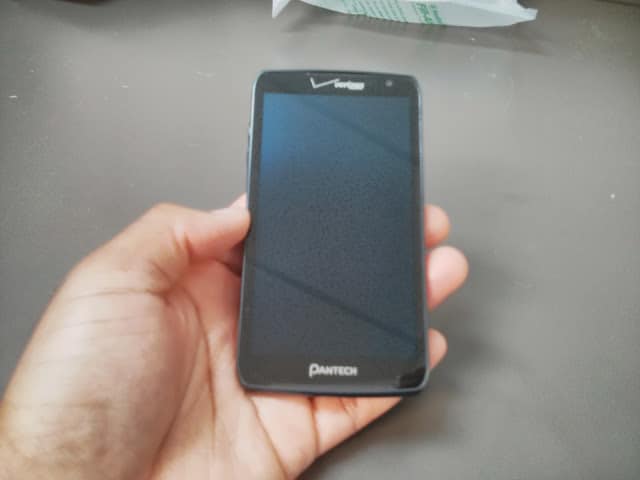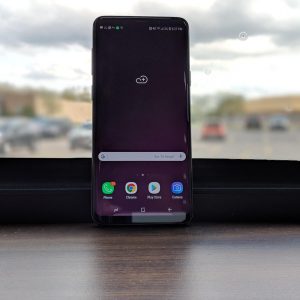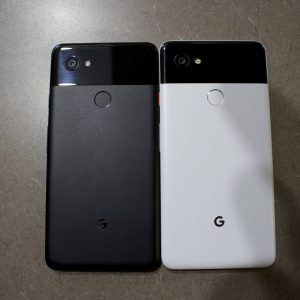Samsung Galaxy Nexus Review
5 min read
By Rob Boggan
Make no bones about it, I am an Android guy. I love the ecosystem, I love the customization options, I love having total access to the phone’s internal file system. Before I lose my Apple fan boy readers, yes, I agree that the iPhone is a stellar device and obviously has a tighter (possibly better) OS and Eco system, but I prefer Android. So it was with baited breath that I finally went ahead and dove right into the Fed Ex box that was left on my stoop wondering how I would feel about the latest pure Android experience. Historically, these are the phones that set the bar for most upcoming Android devices. These are the phones that raise that bar for most all other smartphones, and it’s usually for the best. The Galaxy Nexus is no exception to the rule and provides a really clean, yet still flawed version of Android.
As far as design goes, the Galaxy Nexus has a real premium look and feel to it. I wasn’t as disappointed with it aesthetically as I previously was with the Nexus S, and it’s polished plastic backing. With the Galaxy Nexus, there’s still the plastic backing, but instead of the shiny black material, The new Nexus sports a basket weave like finish that feels good in the palm of your hands. The phone itself is a relatively large phone, but due to the unbelievably thin design it really doesn’t feel as big as it truly is. End to end, the screen on the Galaxy Nexus is a piece of beauty, and looking at the design it’s hard to see where the actual screen begins and ends when the screen is powered off. The curved glass display feels really good with both typing in landscape mode and while talking on the phone. The contour feels like a natural fit against your face and could possibly be the most comfortable handset I’ve ever used. What’s weird about the design of the Galaxy Nexus is how it tapers from the bottom to the top. The bottom of the phone is noticeably thicker than the top, which I think actually helps add to the grip of the device and adds more of a solid feeling to it.
With this being the first Ice Cream Sandwich powered Android device, I expected it to have a few flaws here and there, but surprisingly, there aren’t many. The revamped dialer looks awesome, the camera interface is sweet, and I especially love the integration of Gingerbread and Honeycomb into one universal OS. One thing that users will notice right away is how much more Honeycomb the interface is than Gingerbread. The entire interface is still highlighted with the black and blue laser etched, Tron-like highlights in just about every menu. On the Galaxy Nexus, there are NO physical buttons save for the volume rocker and power key on the left and right sides of the phone. This ends up being a huge benefit as it comfortably allows for more screen real estate without sacrificing functionality. The navigation buttons have been trimmed from four down to three, with the Home, Back, and Open Apps keys making the cut. This is something that made the cut from the Honeycomb OS and actually translates to ICS perfectly allowing for much better multitasking and app switching on the fly. The improved contacts app made me feel like I was using a Windows phone because…well that’s exactly what it looks like. The bigger, more prominent photos within the app, along with the recently contacted tab really looks ripped right out of the Windows interface.
The Galaxy Nexus runs smoother than any phone I’ve personally had the privilege of using, and is right up there with the iPhone 4S IF not better. This is possible thanks in part to a dual core 1.2 GHz processor and better task managing on the part of the Galaxy Nexus. It’s now even easier than ever to go in and shut down open apps, which is crucial in both battery life and data consumption. Speaking of which, there’s also a new data monitor that allows users to set a data limit within your phone which will alert you once you reach your set threshold to prevent overages.
There’s also your standard set of dual cameras, front facing VGA camera and a rear 5MP shooter with zero shutter lag. For the most part, the photos we took with the Galaxy Nexus were very good quality despite it only being a 5MP camera. The zero shutter lag works to perfection and allowed me to catch several bursts of photos at once, which definitely comes in handy especially when your subject is a hyper active three year old. Google talked about it’s new panorama mode quite a bit, and I must say I was also impressed with it as well. Using my Galaxy S II to take a panoramic photo yielded sub par results, but when I took the same photo with the Galaxy Nexus, it really fit the scenery into the photo the correct way without making it look warped.
Battery life was a bit suspect under my use. Under heavy usage throughout the day, I found myself reaching for the charger after about 6 hours. Normally that wouldn’t be a tremendously terrible number, but considering I’m currently clocking around 10 with my Galaxy S II it’s certainly a sharp decline. Call quality was great an there was sufficient coverage just about everywhere I went. The speaker phone was a bit more quiet than what I prefer, but it’s been improved over the insanely quiet speaker of the Nexus S.
The Samsung Galaxy Nexus is more than a worthy successor to the Nexus One and Nexus S, it is the BEST Android phone on the market right now. Combining decent battery life, with excellent performance and the ability to more actively and accurately control your device’s data consumption are all huge advantages which at the moment are a Galaxy Nexus exclusive. If you are one that has to have the latest and greatest, look no further than the Galaxy Nexus. As previously stated, the Nexus phones usually set the bar for the next breed of Android devices, but why wait for that next breed when you can have it all right now?












